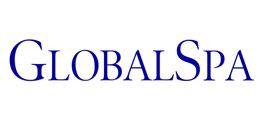Olaf Larsen, senior perfumer at Eurofragrance Dubai on the cultural collaboration between art and perfumery, Europe and the Middle East.
It may sound surprising but in a diverse and divided world, sometimes a bottle of perfume can be a cultural unifier. At least that’s the overriding message that Eurofragrance, the Barcelona based perfume house, gave with its ‘Artlab Gallery’, a space displaying works for art, ranging from paintings to perfumes, that was created as a result of a collaboration between perfumers and artists at the recently-held Beautyworld Middle East in the city.
The objective of Artlab Gallery was simple: to bring creators from two artistic universes and different cultures together, inviting them to connect, inspire one another and create together. This year, Eurofragrance sought inspiration from the artistic collaboration between young women artists based in Dubai and accomplished perfumers. The result was a heady collection of five creations that combined visual arts and perfume design. The project not just gave young female artists a voice but enriched perfumers with fresh ideas and a youthful perspective.
So how did this marriage between Middle Eastern artistry and European perfumery flair impact the creations and in a larger sense, the culture of the region? What is the process of two different cultures merging for a fragrant union like? Olaf Larsen, Senior Perfumer at Eurofragance Dubai gave us some perspectives:
Can you share more details about your Middle East inspired perfumes? What are the special ingredients and what is the creative process?
Actually, the perfume I created for Beautyworld is an illustration of the changes occurring in Middle Eastern perfumery. Over the past four to five years, we have seen that classic Middle Eastern fragrances have taken on more Western world olfactive characteristics. One could say that a fusion is underway between the West and the Middle East, and this trend is accelerating.
A traditional Middle Eastern fragrance is called Mukhallat in Arabic, which means mixture, and it typically contains oud, rose, saffron andsandalwood. The most notable of these ingredients is oud, also known as agarwood; it comes from the Aquilaria genus of trees and packs an olfactive punch, which some find quite powerful.
Personally, I like to balance oud notes with ingredients associated with French perfumery. Ambergris is definitely on my list, but one can also consider edible olfactive notes such as chocolate, vanilla or even cotton candy. An easy way to make a French Middle Eastern fragrance—one that bridges the two perfumistic worlds—is to add vanilla and more rose in a classic Mukhallat.
Regarding the process, I’d say that I keep an eye… and my nose on ingredients with a proven sustainability profile that are up-and-coming in French perfumery, and explore ways to integrate them into my creations for the Gulf market. It is however important to note that the trend is also operating in the other direction. Oud has made significant entries in major European perfume brands, and its acceptance is growing.
What was the inspiration for your perfume?
For this year’s Beautyworld Middle East fair, Eurofragance matched up perfumers with young women artists based in the UAE, and asked them to collaborate on a joint project that would include both an artistic and perfumistic dimension. I had the honour of working with Zaara Rahman, a 17-year-old student with a passion for photography. Her picture of the helm of a wooden boatsailing into Dubai was the source of inspiration for our project that we entitled “Wind of Change.”
Just as her photograph captures both old and modern buildings of the Dubai skyline, I aimed to create a fragrance with a sense of heritage. The old, parched wooden deck of the boat inspired me to create a scent in typical Middle Eastern tradition around buddhawood, to which I added notes of Arabic coffee flavored with cardamon, and a touch of fruity date. This was counterbalanced with bergamot to suggest a modern freshness. In Zaara’s photograph freshness is also communicated by flowing water, a metaphor for change and a voyage from the past into the future.
Please give our readers a few tips on selecting the right fragrance. How can a fragrance define one’s personality?
I often get this question, but it really is a question of personal taste. It is like asking someone ‘what should I eat?’ The best advice that I can give is to choose a perfume that makes you feel comfortable with yourself and that expresses what is important to you. Do you want to be noticed, do you wish to seduce or make another statement? Maybe you prefer intense, heavy notes, or maybe you favor light, refreshing citrus accords.
If you aren’t sure which it is, then proceed by trial and error the next time you are in a perfume store, keeping in mind that you should live with the scent on your skin or fabric for several hours to evaluate how it evolves and see how others react to it. There is no right or wrong scent. Pick one that you like—that makes you feel comfortable—and if others like it too, you have a winner.






